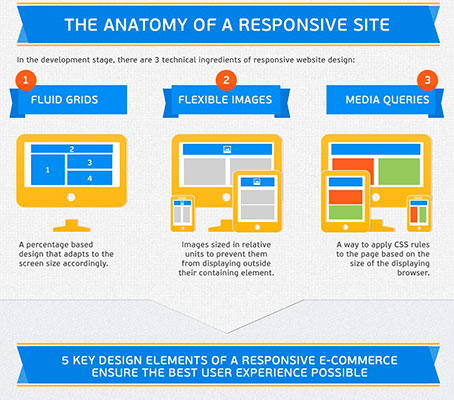Site Design Basics: Tips For Building A User-Friendly Site
Site Design Basics: Tips For Building A User-Friendly Site
Blog Article
Personnel Writer-McKnight Skinner
When it concerns internet site layout, guaranteeing user-friendliness is key. From receptive layout to structured navigating, every aspect plays an essential duty in developing a site that deals with your audience's requirements. But what regarding the finer information that can make or break a user's surfing experience? Remain tuned as https://elliotrmgbv.win-blog.com/11411151/increase-your-brand-the-duty-of-expert-web-site-advancement-in-expanding-your-company reveal some often-overlooked ideas that can elevate your website's usability to the next degree, making it genuinely stand out in the electronic landscape.
Relevance of Responsive Design
Receptive layout is an essential facet of contemporary internet site growth. Guaranteeing your web site is receptive ways that it can adjust to various screen dimensions and devices, offering a seamless experience for individuals.
With simply click the following website page raising use of smartphones and tablets to access the internet, having a receptive style is vital for reaching a wider audience. It aids in enhancing user experience by making your site simple to browse and continue reading any kind of device.
In addition, receptive style can positively influence your search engine positions, as search engines like Google focus on mobile-friendly internet sites. By having a responsive style, you're additionally future-proofing your website, as brand-new devices with varying screen sizes continue to emerge.
Simplify Navigation Structure
To enhance customer experience and facilitate easy access to info on your internet site, simplifying the navigation structure is extremely important. When designing your site, concentrate on developing a clear and instinctive navigating food selection that aids site visitors find what they're seeking quickly.
Limitation the number of food selection items to the fundamentals, grouping relevant pages with each other to stay clear of overwhelming individuals. Usage descriptive labels that plainly indicate the content of each web page, making it easier for individuals to understand where each web link will take them.
Take into consideration implementing dropdown menus for subcategories to prevent littering the major navigating bar. Additionally, include a search bar prominently on the page for users who prefer looking for certain info.
Prioritize mobile responsiveness in your navigating layout to make sure simple accessibility on all devices.
Enhance Page Load Speed
Improving page load speed is important for retaining visitors on your site. Slow-loading web pages discourage customers and can cause high bounce rates. To optimize page lots rate, start by enhancing pictures. Compress pictures without compromising high quality to decrease their documents sizes.
In addition, allow web browser caching to save regularly accessed sources in your area, quickening lots times for returning visitors. Minify CSS, JavaScript, and HTML files by getting rid of unneeded characters, comments, and format, improving tons speed.
Consider using a content distribution network (CDN) to distribute your site's web content throughout numerous web servers worldwide, minimizing latency for customers accessing your site from different areas. Finally, limit the use of third-party scripts and plugins, as they can substantially impact lots times.
Final thought
In conclusion, by integrating receptive design, streamlining navigation, and enhancing page tons speed, you can create an user-friendly web site that interest a broader audience and enhances user experience. These essential elements ensure that visitors can easily accessibility and navigate your website across different gadgets, causing boosted interaction and satisfaction. By concentrating on these key elements, you can develop an effective internet site that keeps users coming back for even more.
